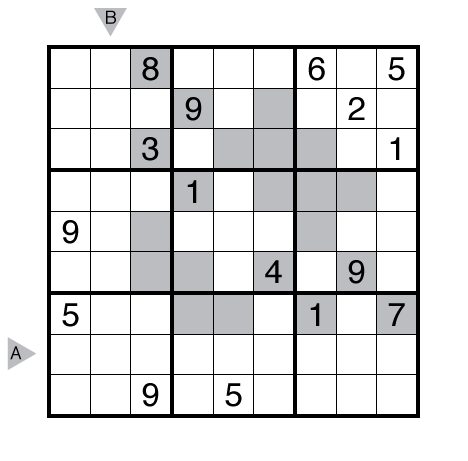Repeated Neighbors Sudoku by Prasanna Seshadri

or solve online (using our beta test of Penpa-Edit tools)
Theme: Sudoku GP Round 7 (this puzzle continues a hidden theme present throughout Prasanna’s Sudoku Grand Prix set)
Author/Opus: This is the 41st puzzle from our contributing puzzlemaster Prasanna Seshadri.
Rules: Standard Sudoku rules. Additionally, all cells having the same digit(s) more than once as orthogonal neighbors are shaded. (If a cell is not shaded, it cannot have any digits repeated as orthogonal neighbors). Or see this example image.
Answer String: Enter the 8th row from left to right, followed by a comma, followed by the 2nd column from top to bottom.
Time Standards (highlight to view): Grandmaster = 9:00, Master = 17:30, Expert = 35:00
Solution: PDF; a solution video is available here.
Note: Follow this link for other less common variations of Sudoku and this link for classic Sudoku. If you are new to this puzzle type, here are our easiest Sudoku to get started on.

Didn’t find the hidden theme. It’s not countdown.
Good puzzle after you get the necessary logic step as a first-time solver of repeated neighbors. I liked solving the center cell.
Fhz rnpu arneol tebhc bs qvtvgf (qvntbanyyl pbaarpgrq, gbc evtug obk, ybjre yrsg sbhe qvtvgf). Jung ner gurl nyy qvivfvoyr ol?
Thank you for lurking! You are appreciated.
Before this puzzle schedule was announced I had occasion to search for the rules of “repeated neighbors” as the title alone conveys nothing, since repeated neighbors in the ordinary sense are impossible; but I gave up after a couple of sites that should have been able to explain it didn’t. So this is a great introduction.
Mental note: If the amount of logic your ordinary paths create doesn’t seem sufficient to solve the puzzle, search for an overlooked global constraint in addition.
May I humbly suggest a re-write of the rules? I had no idea what the rules were trying to say until I saw the walkthrough. How about, “Additionally, all cells with (at least) one pair of identical, orthogonal neighbors are shaded. (If a cell is not shaded, all four orthogonal neighbors are different.)
So good. It blew my mind!
Thanks!